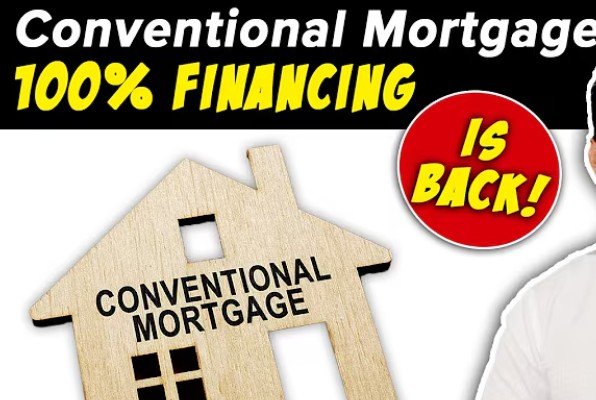Everything You Need to Know About Conventional Home Loans
Table of Contents
- Introduction
- What is a Conventional Mortgage?
- Conventional vs. Government-Backed Loans
- Types of Conventional Mortgages
- Benefits of Conventional Mortgages
- Drawbacks to Consider
- Who Qualifies for a Conventional Loan?
- Credit Score and Income Requirements
- Down Payment Expectations
- Private Mortgage Insurance (PMI)
- Conforming vs. Non-Conforming Loans
- Loan Limits in 2025
- Fixed-Rate vs. Adjustable-Rate Conventional Loans
- How to Apply for a Conventional Loan
- Documentation Checklist
- Underwriting and Approval Process
- Appraisals and Home Inspections
- Closing Costs and Fees
- Refinancing a Conventional Mortgage
- How to Pay Off a Conventional Loan Faster
- Common Mistakes to Avoid
- Tips for First-Time Buyers
- Using a Conventional Mortgage for Investment Properties
- Conventional Loan vs. FHA, VA, USDA
- Final Thoughts
- Frequently Asked Questions (FAQs)
1. Introduction
Buying a home is one of life’s biggest investments, and choosing the right mortgage is critical. Among the many financing options available, conventional mortgages are the most popular for good reason. They offer flexibility, competitive rates, and are widely accepted by lenders across the U.S.
This in-depth guide covers everything you need to know about conventional home loans in 2025, including eligibility, rates, pros and cons, how to apply, and much more.
2. What is a Conventional Mortgage?
A conventional mortgage is a home loan that is not insured or guaranteed by a government agency like the FHA, VA, or USDA. These loans are offered by private lenders such as banks, credit unions, and mortgage companies.
Most conventional loans are conforming loans, meaning they meet the standards set by Fannie Mae and Freddie Mac, the two government-sponsored enterprises (GSEs) that buy and securitize mortgages.
3. Conventional vs. Government-Backed Loans
| Feature | Conventional Loan | FHA Loan | VA Loan | USDA Loan |
|---|---|---|---|---|
| Backed by Gov’t | No | Yes (FHA) | Yes (VA) | Yes (USDA) |
| Down Payment | 3%–20%+ | 3.5% | 0% | 0% |
| Credit Score | 620+ | 580+ | 620+ | 640+ |
| PMI Required | Yes (if <20%) | Yes | No | Yes |
| Loan Limits | Yes | Yes | No | Yes |
| Best For | Borrowers with good credit | Low-credit buyers | Veterans | Rural buyers |
4. Types of Conventional Mortgages
a. Conforming Loans
These meet the loan limits and guidelines set by Fannie Mae and Freddie Mac.
b. Non-Conforming Loans
Loans that don’t meet GSE standards, often due to size or borrower risk. Jumbo loans are a common example.
c. Fixed-Rate Mortgages
Interest rate stays the same over the life of the loan. Common terms: 15, 20, or 30 years.
d. Adjustable-Rate Mortgages (ARMs)
Interest rate starts low and adjusts periodically after a fixed introductory period (e.g., 5/1 ARM).
5. Benefits of Conventional Mortgages
- Lower interest rates for borrowers with strong credit
- Flexible terms (10, 15, 20, 30 years)
- No upfront mortgage insurance premium (unlike FHA)
- PMI can be canceled once you reach 20% equity
- Suitable for primary residences, second homes, and investment properties
- No income restrictions
6. Drawbacks to Consider
- Stricter credit and income requirements
- Private Mortgage Insurance (PMI) if putting down less than 20%
- Not ideal for buyers with low credit scores
- Higher down payment than VA/USDA loans
- May involve higher closing costs
7. Who Qualifies for a Conventional Loan?
Conventional loans are best suited for:
- Borrowers with a credit score of 620 or higher
- Individuals with a stable income and employment history
- Those with manageable debt-to-income (DTI) ratios
- Buyers able to make at least a 3% down payment
- People seeking long-term homeownership
8. Credit Score and Income Requirements
| Requirement | Minimum Threshold |
|---|---|
| Credit Score | 620 (higher preferred) |
| DTI Ratio | ≤ 43% (50% with compensating factors) |
| Income Stability | 2+ years in the same job/field |
| Savings | Enough to cover down payment and closing costs |
Lenders prefer borrowers with higher credit scores, which can lead to better rates and terms.
9. Down Payment Expectations
Conventional loans allow for down payments as low as 3% for first-time buyers. However, putting down 20% or more:
- Eliminates PMI
- Lowers monthly payments
- Improves loan terms
Some programs, like HomeReady or Home Possible, allow for low down payments with added flexibility.
10. Private Mortgage Insurance (PMI)
If your down payment is less than 20%, you’ll need PMI. This protects the lender in case of default.
- Cost: 0.3% to 1.5% of loan amount annually
- Cancellation: Automatically removed at 22% equity or can be requested at 20%
- Paid monthly, upfront, or both
11. Conforming vs. Non-Conforming Loans
| Feature | Conforming | Non-Conforming |
|---|---|---|
| Meets GSE Guidelines | Yes | No |
| Loan Limit | ≤ $766,550 (2025) | > $766,550 |
| Risk Level | Standard | Higher |
| Example | Standard 30-year loan | Jumbo loan |
| Availability | Widely available | Fewer lenders offer |
12. Loan Limits in 2025
In most U.S. counties, the 2025 conforming loan limit is:
- $766,550 for a single-family home
- Higher limits in high-cost areas (up to $1,149,825)
Check your county’s limits using the FHFA loan limit tool.
13. Fixed-Rate vs. Adjustable-Rate Conventional Loans
| Feature | Fixed-Rate | ARM |
|---|---|---|
| Interest Rate | Constant | Changes after fixed period |
| Stability | High | Medium |
| Initial Cost | Higher | Lower |
| Ideal For | Long-term stay | Short-term plans |
Fixed-rate mortgages are popular for their predictability, while ARMs appeal to buyers expecting to move or refinance within a few years.
14. How to Apply for a Conventional Loan
- Check your credit report
- Get pre-approved by a lender
- Compare lenders and rates
- Submit documentation
- Lock your rate
- Underwriting and appraisal
- Close on your loan
15. Documentation Checklist
To apply for a conventional loan, you’ll need:
- Recent pay stubs (last 30 days)
- W-2s or tax returns (2 years)
- Bank statements (2–3 months)
- ID and Social Security number
- Employment verification
- Debt and asset details
16. Underwriting and Approval Process
Lenders will review:
- Your credit report
- Income and employment verification
- Debt-to-income ratio
- Appraisal of the property
- Down payment and reserves
Expect underwriting to take 3–5 weeks, depending on the complexity.
17. Appraisals and Home Inspections
- Appraisal: Required by lender to assess fair market value
- Home Inspection: Optional but highly recommended
- If the home appraises lower than the sale price, you may need to renegotiate or increase your down payment.
18. Closing Costs and Fees
Typical closing costs range from 2% to 5% of the loan amount and include:
- Origination fee
- Title search and insurance
- Appraisal fee
- Recording fee
- Escrow and prepaids
- Attorney fees (if applicable)
Ask your lender for a Loan Estimate (LE) to review all expected costs.
19. Refinancing a Conventional Mortgage
You can refinance to:
- Lower your interest rate
- Shorten your term
- Cash out equity
- Switch from ARM to fixed-rate
Options include:
- Rate-and-term refinance
- Cash-out refinance
- Streamline refinance (if switching from another conventional)
20. How to Pay Off a Conventional Loan Faster
- Make bi-weekly payments instead of monthly
- Add extra principal with each payment
- Refinance to a shorter loan term
- Make one extra payment per year
- Avoid late payments and penalties
21. Common Mistakes to Avoid
- Ignoring your credit score
- Not shopping for the best interest rate
- Making major purchases before closing
- Skipping the home inspection
- Overstretching your budget
22. Tips for First-Time Buyers
- Explore low down payment options (3%)
- Ask about grants and assistance programs
- Don’t forget PMI and closing costs
- Get pre-approved early
- Work with an experienced realtor and loan officer
23. Using a Conventional Mortgage for Investment Properties
You can use conventional loans to buy:
- Single-family rental homes
- Multi-unit properties (up to 4 units)
- Second homes or vacation homes
Be aware:
- Higher down payments (15–25%)
- Stricter credit requirements
- Must show income from property
24. Conventional Loan vs. FHA, VA, USDA
| Feature | Conventional | FHA | VA | USDA |
|---|---|---|---|---|
| Min Down Payment | 3% | 3.5% | 0% | 0% |
| PMI | Yes (until 20% equity) | Yes (for life if <10% down) | No | Yes |
| Credit Score | 620+ | 580+ | 620+ | 640+ |
| Loan Limits | Yes | Yes | No | Yes |
| Best For | Good credit, flexibility | Low credit, first-time buyers | Veterans | Rural/low-income buyers |
25. Final Thoughts
A conventional mortgage is a strong option for borrowers with good credit and stable finances. With competitive rates, flexible terms, and the ability to avoid long-term mortgage insurance, it remains the most popular loan type in the U.S. in 2025.
Whether you’re a first-time homebuyer, upgrading to a new home, or investing in property, a conventional loan offers flexibility and affordability if you meet the eligibility criteria.
26. Frequently Asked Questions (FAQs)
Q: Is a conventional mortgage better than FHA?
A: It depends. Conventional loans are ideal for those with strong credit and higher down payments, while FHA is better for lower-credit or first-time buyers.
Q: Can I get a conventional loan with 10% down?
A: Yes. In fact, putting down 10% can help lower your PMI and improve your loan terms.
Q: How long does it take to get approved?
A: On average, 3 to 5 weeks from application to closing, depending on documentation and lender efficiency.
Q: Do I need to pay PMI forever?
A: No. PMI is automatically removed when you reach 22% equity or can be requested at 20%.
Q: Can I use a conventional loan for a fixer-upper?
A: Yes, but renovation funds are not typically included. Consider a renovation loan or cash-out refinance for major projects.







